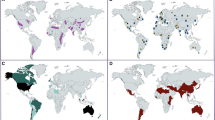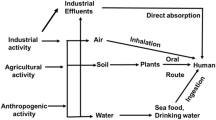Abstract
Cd is a hazardous substance and carcinogen that is present in the environment; it is known to cause toxic effects in living organisms. Sulforaphane is a naturally available phytochemical with antioxidant, anti-inflammatory, and anticarcinogenic properties. However, the effects of sulforaphane on Cd toxicity in human mesenchymal stem cells (hMSCs) are unknown. In the present study, we investigated the molecular mechanisms of the effects of sulforaphane on Cd toxicity in hMSCs by using MTT assays, acridine orange/ethidium bromide staining, Hoechst staining, LysoRed staining, assessment of mitochondrial membrane potential, and gene expression analysis. Cd decreased hMSC viability in a dose-dependent manner with an IC50 value of 56.5 μM. However, sulforaphane did not induce any significant reduction in cell viability. Nuclear morphological analysis revealed that Cd induced necrotic cell death. Additionally, Cd caused mitochondrial membrane potential loss in hMSCs. The treatment of Cd-exposed cells with sulforaphane (Cd-sulforaphane co-treatment) resulted in a significant recovery of the cell viability and nuclear morphological changes compared with that of cells treated with Cd only. The gene expression pattern of cells co-treated with Cd-sulforaphane was markedly different from that of Cd-treated cells, owing to the reduction in Cd toxicity. Our results clearly indicated that sulforaphane reduced Cd-induced toxic effects in hMSCs. Overall, the results of our study suggested that sulforaphane-rich vegetables and fruits can help to improve human health through amelioration of the molecular effects of Cd poisoning.








Similar content being viewed by others
References
Alkharashi NAO, Periasamy VS, Athinarayanan J, Alshatwi AA (2017) Cadmium triggers mitochondrial oxidative stress in human peripheral blood lymphocytes and monocytes: analysis using in vitro and system toxicology approaches. J Trace Elem Med Biol 42:117–128. https://doi.org/10.1016/j.jtemb.2017.04.014
Ansari MA, Raish M, Ahmad A, Alkharfy KM, Ahmad SF, Attia SM, Alsaad AM, Bakheet SA (2017) Sinapic acid ameliorate cadmium-induced nephrotoxicity: in vivo possible involvement of oxidative stress, apoptosis, and inflammation via NF-κB downregulation. Environ Toxicol Pharmacol 51:100–107. https://doi.org/10.1016/j.etap.2017.02.014
Athinarayanan J, Periasamy VS, Alsaif MA, Al-Warthan AA, Alshatwi AA (2014) Presence of nanosilica (E551) in commercial food products: TNF-mediated oxidative stress and altered cell cycle progression in human lung fibroblast cells. Cell Biol Toxicol 30(2):89–100. https://doi.org/10.1007/s10565-014-9271-8
Berg JM, Godwin HA (1997) Lessons from zinc-binding peptides. Annu Rev Biophys Biomol Struct 26(1):357–371. https://doi.org/10.1146/annurev.biophys.26.1.357
Cannino G, Ferruggia E, Luparello C, Rinaldi AM (2009) Cadmium and mitochondria. Mitochondrion 9(6):377–384. https://doi.org/10.1016/j.mito.2009.08.009
Chang KC, Hsu CC, Liu SH, Su CC, Yen CC, Lee MJ, Chen KL, Ho TJ, Hung DZ, Wu CC, Lu TH (2013) Cadmium induces apoptosis in pancreatic β-cells through a mitochondria-dependent pathway: the role of oxidative stress-mediated c-Jun N-terminal kinase activation. PLoS One 8(2):e54374. https://doi.org/10.1371/journal.pone.0054374
Choi JH, Rhee IK, Park KY, Park KY, Kim JK, Rhee SJ (2003) Action of green tea catechin on bone metabolic disorder in chronic cadmium-poisoned rats. Life Sci 73(12):1479–1489. https://doi.org/10.1016/S0024-3205(03)00433-8
Dong Z, Wang L, Xu J, Li Y, Zhang Y, Zhang S, Miao J (2009) Promotion of autophagy and inhibition of apoptosis by low concentrations of cadmium in vascular endothelial cells. Toxicol In Vitro 23(1):105–110. https://doi.org/10.1016/j.tiv.2008.11.003
Eybl V, Kotyzova D, Koutensky J (2006) Comparative study of natural antioxidants–curcumin, resveratrol and melatonin–in cadmium-induced oxidative damage in mice. Toxicology 225(2):150–156. https://doi.org/10.1016/j.tox.2006.05.011
Jia Y, Lin J, Mi Y, Zhang C (2011) Quercetin attenuates cadmium-induced oxidative damage and apoptosis in granulosa cells from chicken ovarian follicles. Reprod Toxicol 31(4):477–485. https://doi.org/10.1016/j.reprotox.2010.12.057
Jung YS, Jeong EM, Park EK, Kim YM, Sohn S, Lee SH, Baik EJ, Moon CH (2008) Cadmium induces apoptotic cell death through p38 MAPK in brain microvessel endothelial cells. Eur J Pharmacol 578(1):11–18. https://doi.org/10.1016/j.ejphar.2007.08.049
Kaji T, Mishima A, Yamamoto C, Sakamoto M, Koizumi F (1992) Effect of cadmium on the monolayer maintenance of vascular endothelial cells in culture. Toxicology 71(3):267–276. https://doi.org/10.1016/0300-483X(92)90029-E
Katoch O, Kumar A, Adhikari JS, Dwarakanath BS, Agrawala PK (2013) Sulforaphane mitigates genotoxicity induced by radiation and anticancer drugs in human lymphocytes. Mutat Res Genet Toxicol Environ Mutagen 758(1):29–34. https://doi.org/10.1016/j.mrgentox.2013.08.009
Kukongviriyapan U, Apaijit K, Kukongviriyapan V (2016) Oxidative stress and cardiovascular dysfunction associated with cadmium exposure: beneficial effects of curcumin and tetrahydrocurcumin. Tohoku J Exp Med 239(1):25–38. https://doi.org/10.1620/tjem.239.25
Luevano J, Damodaran C (2014) A review of molecular events of cadmium-induced carcinogenesis. J Environ Pathol Toxicol Oncol 33(3):183–194. https://doi.org/10.1615/JEnvironPatholToxicolOncol.2014011075
Messner B, Knoflach M, Seubert A, Ritsch A, Pfaller K, Henderson B, Shen YH, Zeller I, Willeit J, Laufer G, Wick G, Kiechl S, Bernhard D (2009) Cadmium is a novel and independent risk factor for early atherosclerosis mechanisms and in vivo relevance. Arterioscler Thromb Vasc Bio 29(9):1392–1398. https://doi.org/10.1161/ATVBAHA.109.190082
Nieminen AL (2003) Apoptosis and necrosis in health and disease: role of mitochondria. Int Rev Cytol 224:29–55. https://doi.org/10.1016/S0074-7696(05)24002-0
Periasamy VS, Athinarayanan J, Al-Hadi AM, Al Juhaimi F, Mahmoud MH, Alshatwi AA (2015) Identification of titanium dioxide nanoparticles in food products: induce intracellular oxidative stress mediated by TNF and CYP1A genes in human lung fibroblast cells. Environ Toxicol Pharmacol 39(1):176–186. https://doi.org/10.1016/j.etap.2014.11.021
Porru S, Alessio L (1996) The use of chelating agents in occupational lead poisoning. Occup Med 46(1):41–48. https://doi.org/10.1093/occmed/46.1.41
Prins JM, Fu L, Guo L, Wang Y (2014) Cd2+-induced alteration of the global proteome of human skin fibroblast cells. J Proteome Res 13(3):1677–1687. https://doi.org/10.1021/pr401159f
Rana SVS, Verma S (1996) Protective effects of GSH, vitamin E, and selenium on lipid peroxidation in cadmium-fed rats. Biol Trace Elem Res 51(2):161–168. https://doi.org/10.1007/BF02785435
Rani A, Kumar A, Lal A, Pant M (2014) Cellular mechanisms of cadmium-induced toxicity: a review. Int J Environ Health Res 24(4):378–399. https://doi.org/10.1080/09603123.2013.835032
Rennolds J, Malireddy S, Hassan F, Tridandapani S, Parinandi N, Boyaka PN, Cormet-Boyaka E (2012) Curcumin regulates airway epithelial cell cytokine responses to the pollutant cadmium. Biochem Biophys Res Commun 417(1):256–261. https://doi.org/10.1016/j.bbrc.2011.11.096
Renugadevi J, Prabu SM (2010) Cadmium-induced hepatotoxicity in rats and the protective effect of naringenin. Exp Toxicol Pathol 62(2):171–181. https://doi.org/10.1016/j.etp.2009.03.010
Shaikh ZA, Thanhtam TV, Khalequz Z (1999) Oxidative stress as a mechanism of chronic cadmium-induced hepatotoxicity and renal toxicity and protection by antioxidants. Toxicol Appl Pharmacol 154(3):256–263. https://doi.org/10.1006/taap.1998.8586
Sharma R, Sharma A, Chaudhary P, Pearce V, Vatsyayan R, Singh SV, Awasthi S, Awasthi YC (2010) Role of lipid peroxidation in cellular responses to D, L-sulforaphane, a promising cancer chemopreventive agent. Biochemistry 49(14):3191–3202. https://doi.org/10.1021/bi100104e
Sigel A, Sigel H, Sigel RKO (eds) (2013) Cadmium: from toxicity to essentiality, vol 11. Springer, Dordrecht. https://doi.org/10.1007/978-94-007-5179-8
Sivakumar G, Aliboni A, Bacchetta L (2007) HPLC screening of anti-cancer sulforaphane from important European Brassica species. Food Chem 104(4):1761–1764. https://doi.org/10.1016/j.foodchem.2006.11.040
Tarozzi A, Angeloni C, Malaguti M, Morroni F, Hrelia S, Hrelia P (2013) Sulforaphane as a potential protective phytochemical against neurodegenerative diseases. Oxidative Med Cell Longev 415078:1–10
Valko M, Morris H, Cronin MTD (2005) Metals, toxicity and oxidative stress. Curr Med Chem 12(10):1161–1208. https://doi.org/10.2174/0929867053764635
Wang W, He Y, Yu G, Li B, Sexton DW, Wileman T, Roberts AA, Hamilton CJ, Liu R, Chao Y, Shan Y (2015) Sulforaphane protects the liver against CdSe quantum dot-induced cytotoxicity. PLoS One 10(9):e0138771. https://doi.org/10.1371/journal.pone.0138771
Wätjen W, Beyersmann D (2004) Cadmium-induced apoptosis in C6 glioma cells: influence of oxidative stress. Biometals 17(1):65–78. https://doi.org/10.1023/A:1024405119018
Yang SH, Long M, Yu LH, Li L, Li P, Zhang Y, Guo Y, Gao F, Liu MD, He JB (2016) Sulforaphane prevents testicular damage in Kunming mice exposed to cadmium via activation of Nrf2/ARE signaling pathways. Int J Mol Sci 17(10):1703. https://doi.org/10.3390/ijms17101703
Zhai Q, Narbad A, Chen W (2015) Dietary strategies for the treatment of cadmium and lead toxicity. Nutrients 7(1):552–571
Funding
We gratefully acknowledge the financial support provided by the Research Center, Deanship of Scientific Research, College of Food and Agriculture Science, King Saud University, Riyadh, Saudi Arabia.
Author information
Authors and Affiliations
Corresponding author
Additional information
Responsible editor: Philippe Garrigues
Rights and permissions
About this article
Cite this article
Alkharashi, N.A.O., Periasamy, V.S., Athinarayanan, J. et al. Assessment of sulforaphane-induced protective mechanisms against cadmium toxicity in human mesenchymal stem cells. Environ Sci Pollut Res 25, 10080–10089 (2018). https://doi.org/10.1007/s11356-018-1228-7
Received:
Accepted:
Published:
Issue Date:
DOI: https://doi.org/10.1007/s11356-018-1228-7




